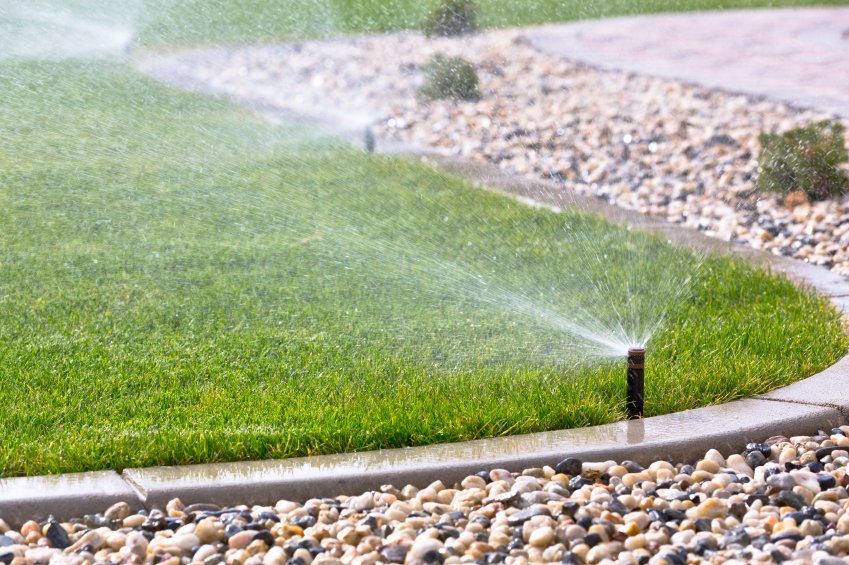Installing a sprinkler system can greatly enhance the health and appearance of your lawn while conserving water. Whether you’re considering installing a new system or upgrading your existing one, there are several important factors to keep in mind. In this article, we will provide you with essential information about sprinkler installation to help you make informed decisions and achieve optimal results.
Planning and Design
Before diving into the installation process, it’s crucial to create a comprehensive plan and design for your sprinkler system. Consider factors such as the size and shape of your lawn, water source availability, plant types, and any specific watering requirements. Determine the zones and the number of sprinkler heads needed to ensure adequate coverage and minimize water waste.
Water Source
Your sprinkler system’s water source is a critical consideration. You can connect it to your home’s water supply or use an independent source like a well or rainwater harvesting system. Ensure that the water pressure and flow rate are sufficient to support the sprinkler system’s needs. In some cases, a booster pump may be required to maintain optimal water pressure.
Irrigation Method
Different irrigation methods are available, including spray heads, rotor heads, and drip irrigation. Spray heads are ideal for small to medium-sized areas, while rotor heads cover larger spaces. Drip irrigation is efficient for watering individual plants or garden beds. Choose the appropriate method based on your lawn’s characteristics and watering needs.
Professional vs. DIY Installation
While a sprinkler system installation can be a DIY project, it’s advisable to hire a professional for optimal results. Professionals have the knowledge and experience to design a system that suits your lawn’s specific requirements. They can also handle any excavation, wiring, and plumbing involved in the installation, ensuring the system operates effectively and efficiently.
System Components
A typical sprinkler system comprises various components, including sprinkler heads, valves, pipes, and a controller/timer. Select high-quality components that are compatible with each other and suitable for your specific needs. Consider factors such as durability, water efficiency, and ease of maintenance when choosing the components.
Installation Process
During the installation process, trenches will be dug to accommodate pipes and wiring. Sprinkler heads will be strategically placed according to the design plan. Valves and a controller/timer will be installed to regulate water flow and automate the system. The installation should be carried out carefully to minimize disruptions to your lawn and ensure everything is properly connected.
Maintenance and Upkeep
Once the sprinkler system is installed, regular maintenance is crucial for optimal performance and longevity. Inspect the system periodically for leaks, damaged or clogged sprinkler heads, and misaligned or blocked spray patterns. Adjust the watering schedule as per the changing seasons and weather conditions. To avoid damage, winterize the system before freezing conditions arrive.
Water Conservation
Efficient water usage is a key consideration when installing a sprinkler system. Opt for water-saving features such as rain sensors and moisture sensors that detect rainfall and soil moisture levels, respectively. These features help prevent unnecessary watering and reduce water waste, promoting environmental sustainability.
Local Regulations
Before installing a sprinkler system, it’s important to familiarize yourself with any local regulations or permits required. Some areas may have specific guidelines for irrigation systems, including water usage restrictions or mandated water-saving measures. Ensure compliance with these regulations to avoid any legal issues or fines.
System Zoning
Dividing your lawn into different zones based on plant type, sun exposure, and water needs is an effective way to ensure efficient watering. Each zone can have its own sprinkler heads and watering schedule tailored to the specific requirements of the plants in that area. Zoning allows for targeted watering and prevents overwatering or underwatering.
Backflow Prevention
Backflow prevention devices are crucial components of a sprinkler system. They prevent the contamination of your drinking water supply by ensuring that water flows in one direction, from the source to the sprinkler system, without backflow. Check with local plumbing codes to determine the specific type of backflow prevention device required for your system.
Wiring and Electrical Considerations
If your sprinkler system includes features such as a controller/timer or remote control capabilities, proper wiring and electrical connections are essential. Ensure that the wiring is safely installed and protected from exposure to moisture or other potential hazards. If you’re unsure about electrical work, it’s advisable to consult a licensed electrician for assistance.
Expansion and Future Modifications
Consider future expansion or modifications when designing and installing your sprinkler system. If you plan to make changes to your landscaping or add new areas to be irrigated, it’s helpful to have the necessary infrastructure in place from the beginning. This allows for easier integration of additional zones or sprinkler heads in the future, saving time and potential disruption.
System Testing and Calibration
Once the installation is complete, thoroughly test and calibrate your sprinkler system. Run each zone to ensure proper coverage and adjust the sprinkler heads as needed to avoid overspray onto hardscapes or structures. Monitor the water distribution pattern and make necessary adjustments to achieve uniform watering.
Professional Maintenance Services
While regular maintenance is essential, some tasks may require the expertise of a professional. Consider hiring a professional maintenance company at least once a year. Professionals can conduct system audits, identify and repair any issues, perform system tune-ups, and optimize water efficiency, ensuring your sprinkler system operates at its best.
In conclusion, proper planning, design, and installation are essential for a successful sprinkler system. Consider your lawn’s specific needs, hire professionals if needed, choose quality components, and prioritize water conservation. With a well-designed and properly installed sprinkler system, you can enjoy a lush and healthy lawn while efficiently managing water resources.


Leave a Reply